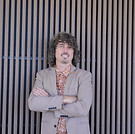

Cecilia Moreira
I’m Cecilia, a Brazilian architect and urban planner with a lifelong passion for transforming spaces into meaningful experiences. Over the past 10 years, I’ve worked across all stages of residential and commercial projects, both in Brazil and abroad.
My Story.
I grew up surrounded by the weight and beauty of history. Architecture was never just a distant idea for me—it was part of my childhood, shaping how I understood space, memory, and the way environments influence how we feel, behave, and connect. I was born in Ouro Preto (Brazil), a UNESCO World Heritage Site.
Coming from a large family of engineers and academics, a deep drive to study and understand the world around me has always been part of who I am. So when I chose to pursue architecture, I thought I was simply following a familiar path. But the real surprise came when I discovered just how human this profession is—how much it depends on empathy, emotional sensitivity, and the responsibility we carry to shape spaces that impact people’s everyday lives.
This perspective changed everything for me. Today, I see architecture as much more than technical problem-solving—it’s a form of art, a tool for care, and a way to bridge beauty, function, and meaning. While I’m highly detail-oriented and committed to ensuring that every project complies with technical standards and regulations, I never lose sight of the bigger picture: creating environments that are thoughtful, practical, and deeply connected to the people who use them.
What I enjoy most in my work is this connection—with people, their stories, and their needs. I value strong relationships, collaborative processes, and clear communication with clients, consultants, and builders alike. Every project becomes a shared journey, and I feel proud to contribute with both creativity and technical clarity.
Moving to Australia expanded this vision even further. Living and working in a different cultural and professional context has taught me that while building codes, legislation, materials, and even habits of use may differ from country to country, the essence of architecture remains the same. When you design with people at the centre—understanding how they live, move, and feel—architecture becomes universally relevant.
This experience has deepened my approach, allowing me to integrate new methods, engage with a different historical narrative, and grow through the richness of cultural exchange. It reminded me that good architecture is ultimately about care—care for detail, for context, and above all, for people.


